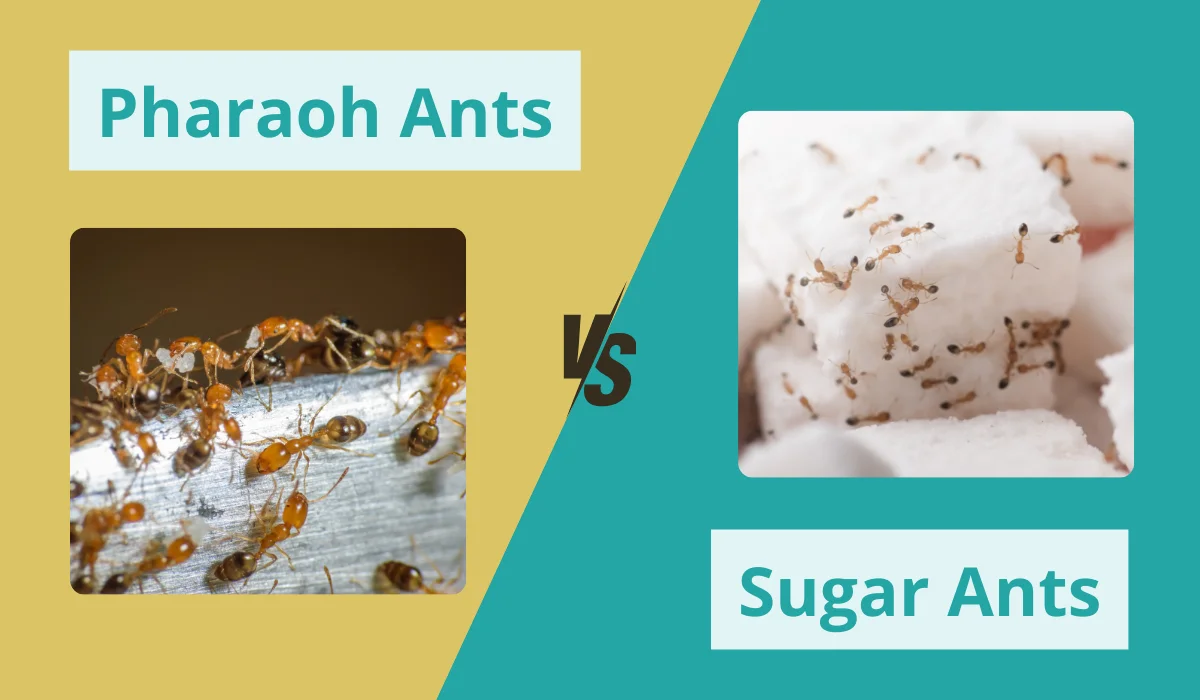Pharaoh Ants vs. Sugar Ants: What's the Difference?
If you’ve spotted tiny ants in your home, you might be wondering what type of ant you’re dealing with. Pharaoh ants and sugar ants are two common culprits, but despite their similarities, they’re quite different in behavior, habitat, and control methods.
Knowing how to tell them apart is the first step toward effective pest management.
Key Takeaways
- Pharaoh ants are yellowish-red with many queens, and sugar ants are dark with only one queen.
- Pharaoh ants live in warm, humid spaces, while sugar ants stay in kitchens and near water.
- Pharaoh ants are harder to get rid of and spread germs, while sugar ants are easier to control.
- Preventing ants involves sealing cracks, storing food securely, and calling professionals if infestations persist.
Pharaoh Ants vs. Sugar Ants: Key Differences

Pharaoh ants and sugar ants are two common ant invaders in homes, but they differ significantly in many ways. Recognizing these differences is key to choosing the right control methods.
Below is a comparison to help you identify and understand these ants more clearly:
Features | Pharaoh Ants | Sugar Ants |
Color | Yellowish-red | Dark brown to black (e.g., ghost ants with pale legs and abdomen) |
Size | 0.06–0.08 inches | 0.10–0.12 inches |
Antennae | Segmented club | Straight |
Colonies | Large colonies with many queens | Smaller colonies with one queen |
Behavior | Spread by budding | Persistent foragers |
Preferred Habitat | Warm climates and humid indoor areas, such as wall voids, baseboards, and inaccessible areas | Kitchen countertops, pantries, and near water sources. |
Diet | Sugary and greasy foods, syrups, honeydew from aphids, and even dead insects. | Sugary foods, syrups, and honeydew from aphids. |
Control Challenges | Hard to eliminate due to budding | Easier to control with bait |
Are These Ants a Problem?
Pharaoh ants are harder to control than odorous house ants or pavement ants because disturbing their colonies can cause "budding," where worker ants create new colonies elsewhere.
On top of that, they can spread pathogens like Salmonella, making them a health risk.
Sugar ants, on the other hand, are less harmful but can still contaminate food and become a nuisance in kitchens.
Like Argentine ants, they’re highly attracted to sugary foods and often form trails into cracks and crevices. Unlike carpenter ants, they don’t damage wood, and they aren’t aggressive like fire ants.
How to Prevent Ant Infestations
Whether dealing with Pharaoh ants or sugar ants, prevention is key to keeping them out of your home.
Here are some tips to reduce the likelihood of ant problems:
- Store sugary foods and pet food sources in sealed containers.
- Clean up crumbs and spills promptly.
- Fix leaks and wipe down wet surfaces to deter ants searching for moisture.
- Check for cracks around windows, doors, and baseboards.
- Seal potential access points with caulk.
- Regularly clean countertops, floors, and pantries to remove food residues.
- Keep plants and trees trimmed away from your home’s exterior.
When to Call Professional Ant Control Services
If you’re unable to control an ant infestation on your own, it may be time to call in professional pest control services. Pharaoh ants, in particular, require expert treatment methods to ensure the entire colony is eliminated.
At Native Pest Management, we offer comprehensive ant control solutions tailored to South Florida homeowners.
Our trained exterminators will:
- Identify the species of ants in your home by examining ant colonies to assess the infestation.
- Apply safe, effective baiting strategies that eliminate worker ants, larvae, pupae, and queens at the source.
- Seal entry points to keep ants out and prevent new ant nests or colonies from forming in your home.
Don’t let ants take over your home. Contact us today to schedule an inspection and take the first step toward an ant-free life!
